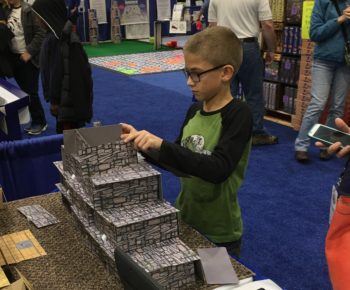
Kardtects brings building card houses to a whole new concept, age and opportunity. You can now build more securely, easily and larger than ever before. With Kardtects presently offering the chance to create stone, bamboo and wooden structures, one very historic and significant building material has yet to be released – and that is the classic representation of bricks.
Bricks are virtually man-made stones , normally regular in shape and from materials that are wet during the process of being made but are dried to then become strong enough to build with, and normally joined with a mortaring like material .
Here are 15 Fun Facts about Bricks!
- The earliest bricks were dried brick, and were from clay-qualitied mud and dried in sun. The oldest bricks to presently be discovered were made from shaped mud and dating from before 7500 BC. These were found at Tell Aswad.
- The oldest furnace dried bricks date from 3000 BC and were found in early Indus Valley cities.
- One of the largest brick buildings is the ancient Jetavanaramaya Stupa, found in Anuradhapura, Sri Lanka, built between 273–301, with 3 million baked bricks.
- The world’s highest brick tower is that of St. Martin’s Church, in Landshut, Germany. Martin’s church has a height of 130.6 metres (428 ft). It took 55 years just to build the tower and was finally dedicated in 1500
- The largest brick castle ever built was the Malbork Castle, in Poland. It is also the largest castle in the world in reference to land area.
- China used bricks extensively from the 2nd millennium BC, with evidence for some of the first fired bricks ever produced has been discovered in ruins dating back 3,000 years ago.
- 8 billion bricks were used to build the Great Wall of China.
- Bricks are laid in courses and numerous patterns known as bonds, commonly called ‘brickwork’.
- The Largest Brick in the world was made by Acme Brick , in Texas. It was called ‘Baby Clay’, and measured at 116 inches long, 39 inches tall and 39 inches wide, and is nearly 3,000 times the size of a standard brick.
- Bricks are great at holding heat within them as the sun burns down. After the sun goes down, the bricks let go of this energy. This adds to the energy-efficiency of the brick structure.
- Bricks developed for use in a walkway or roadway are called paving bricks, while bricks used for lining furnaces, kilns, and fireplaces are called fire bricks or refractory bricks.
- The color of modern bricks are controlled by their chemical and mineral content. Fired bricks normally contain silica (sand), alumina (clay), lime, iron oxide, and magnesia. Iron is converted to iron oxide when a brick is fired, which causes bricks to have a red color. A higher lime content can cause bricks to become white or yellow upon firing.
- In the late 1800s and early 1900s, the largest brick making region in the world was located along the Hudson River, which was home to a large natural deposit of rich clay. More than 100 brick manufacturers operated along the river, with over 40 brick making factories in the village of Haverstraw alone. Many of these bricks were used in the construction of New York City’s brick buildings. Due to various factors, the brick making industry along the Hudson declined around the time of World War II.
- The indentation in the surface of some bricks is called a “frog.” There has been much debate on why it’s called a frog, as well as debate on what purposes the frog serves. There is also debate regarding whether frogged bricks should be laid frog-up or frog-down.
- There is minimal waste produced through the brick building process. Only an insignificant amount of minerals and moisture are vanished during the heating process.
